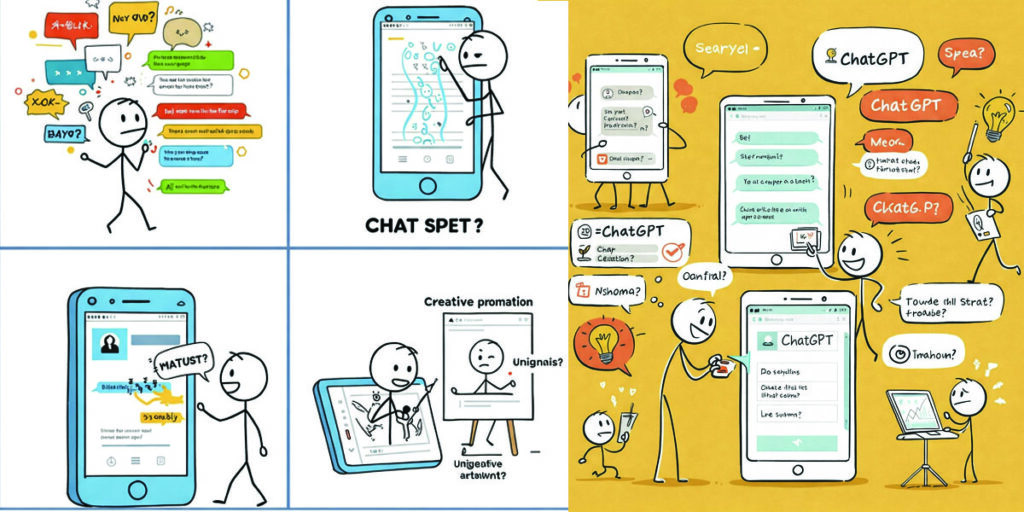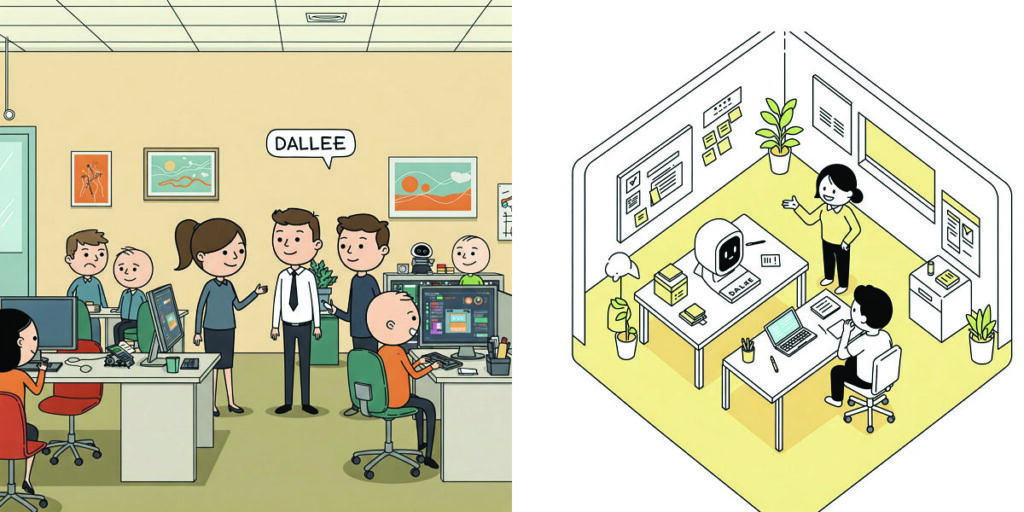AI-powered photo editor offering quick tools like background removal and smart retouching.
Pixlr’s networking strategies encompass strategic partnerships, fostering a large and active user community through its platforms and educational initiatives, and providing a developer API to enable integration with other applications. These efforts contribute to its brand visibility, user acquisition, and the expansion of its ecosystem.
The integration of AI is not merely a feature addition but a fundamental transformation for Pixlr, influencing its product development, market positioning, and user engagement. AI-powered tools like background removal, smart retouching, and generative fill are key drivers of its current and future success, simplifying complex tasks and making advanced photo editing more accessible. As AI continues to advance, Pixlr’s continued focus on incorporating these technologies will be crucial for maintaining its competitive edge and serving the ever-growing demand for efficient and intuitive digital creative tools. Pixlr’s story is a compelling example of how a company can evolve with technology and market demands to remain a relevant and impactful player in the digital creativity space.
The journey of Pixlr is a compelling narrative of adaptation and innovation in the fast-paced tech world. Founded in 2008 by Ola Sevandersson, Pixlr began as a web-based image editing tool built on Macromedia Flash. In its nascent stages, it quickly gained traction due to its user-friendly interface and the accessibility of its features directly within a web browser, eliminating the need for software installation. This early focus on accessibility laid the groundwork for Pixlr’s enduring appeal to a broad audience.
A pivotal moment in Pixlr’s history occurred on July 19, 2011, when Autodesk, a multinational software corporation known for its 3D design, engineering, and entertainment software, announced its acquisition of the Pixlr suite. This acquisition by a major industry player provided Pixlr with greater resources and visibility. Under Autodesk’s ownership, Pixlr continued to develop and expand its offerings. In 2013, Time magazine recognized Pixlr as one of the top 50 websites of the year, a testament to its growing popularity and utility.
The digital landscape, however, is in constant flux. With the decline of Flash technology, Pixlr faced the need for a significant technological overhaul. In 2017, Pixlr was acquired from Autodesk by INMAGINE Group (specifically, by 123RF, a stock photo agency which is part of the Group). This acquisition marked a new era for Pixlr. The platform was subsequently rebuilt and relaunched in HTML5 in 2019. This transition was crucial, allowing Pixlr to shed the limitations of Flash and pave the way for more robust features, improved performance, and greater compatibility across devices and browsers.
The relaunch in 2019 also saw Pixlr rebrand itself as a full creative suite, introducing distinct products tailored to different user needs: Pixlr X, designed for quick and easy graphic design and basic photo editing; Pixlr E, a more advanced editor offering a wider range of tools comparable to traditional desktop software; and Pixlr M, a mobile-first editor. This strategic diversification allowed Pixlr to cater to a broader spectrum of users, from those needing simple touch-ups to those requiring more complex manipulations.
Since the transition to HTML5, Pixlr has been on a continuous path of feature enhancement and innovation. December 2021 saw the addition of new tools, including brushes, a heal tool for retouching, animation capabilities, and batch upload functionality, significantly enhancing its utility for content creators. The introduction of Pixlr 2023 in November 2022 brought further advancements, notably integrating more AI-powered tools such as “AI smart resize,” colorization, and text wrapping. This marked a clear acceleration in Pixlr’s adoption of artificial intelligence to streamline and enhance the editing process.
The commitment to AI-driven features was further solidified with the launch of Pixlr 2024 in November 2023. This version introduced Pixlr Designer and significant AI updates, including AI image generation, AI infill, and AI inpainting. These features leverage sophisticated algorithms to enable users to perform complex tasks with remarkable ease, transforming text prompts into images, intelligently filling in missing areas, and seamlessly removing unwanted objects. The recognition of Pixlr in September 2023 as a Top 13 GenAI Web Product by Andreessen Horowitz, a leading venture capital firm, underscored its position at the forefront of generative AI in the creative space. The consolidation of Pixlr, Designs.ai, and Vectr into the new Pixlr Group in November 2023 further emphasized a strategic focus on generative AI and comprehensive creative solutions.
Pixlr’s history, therefore, is one of consistent evolution, marked by key acquisitions that provided necessary resources and strategic shifts, particularly the crucial move to HTML5 and the aggressive integration of AI technology. This historical trajectory has positioned Pixlr as a dynamic player in the digital imaging market.
Moving to the economic market, Pixlr operates within the vast and competitive landscape of photo editing and graphic design software. The global photography software market is a significant one, valued at approximately USD 3.79 billion in 2024 and projected to grow to nearly USD 8 billion by 2033, with a compound annual growth rate (CAGR) of around 8.6%. The broader image editing software market is also experiencing healthy growth, with estimates placing its value at around USD 900 million in 2022, expected to reach over USD 1.7 billion by 2030 with a CAGR of approximately 7.1%. These figures highlight a robust market driven by increasing demand for digital content, the proliferation of smartphones and social media, and the continuous advancement of editing capabilities, particularly AI-powered tools.
Within this market, Pixlr employs a freemium business model, offering a range of tools and features for free while providing more advanced functionalities and resources through paid subscription tiers (Plus, Premium, and Teams). This model allows Pixlr to attract a large user base with the free version and convert a portion of these users into paying subscribers, generating recurring revenue. The accessibility of the free version is a key driver of its widespread adoption.
Pixlr’s competitive positioning is often described as occupying a space between the simplicity of platforms like Canva and the professional-grade complexity of Adobe Photoshop. It targets semi-professional users, small businesses, educators, and individuals who require powerful editing capabilities without the steep learning curve or high cost associated with some industry-standard software. Its web-based nature and increasing mobile accessibility also cater to users who prioritize flexibility and on-the-go editing.
The integration of AI is a significant factor in Pixlr’s economic strategy and market differentiation. AI-powered features like one-click background removal, smart retouching, and generative capabilities not only simplify complex tasks, making advanced editing accessible to a wider audience, but also significantly speed up the content creation process. This efficiency is a major selling point for users, particularly those in commercial settings or who produce content regularly for social media and other platforms. The market trend clearly indicates that AI-powered features are a major growth driver in the photography software market, expected to account for a substantial portion of future growth. Pixlr’s early and extensive adoption of AI positions it well to capitalize on this trend.
While precise global market share figures for Pixlr can be difficult to ascertain definitively across all segments, some data points suggest its presence. One source indicates a market share of around 0.1% in the Graphics & Photo Editing category, based on analysis of companies using various software. However, market share can vary significantly depending on the specific segment (e.g., web-based editors, mobile apps, professional tools) and geographic region. What is clear is that Pixlr has a substantial and active user base, numbering in the tens of millions globally, with billions of images edited annually. Its educational program also reaches a significant number of students and educators, further expanding its user base and brand recognition.
The revenue generated by Pixlr is primarily global, with strong markets in North America, Europe, and Asia-Pacific. As part of the INMAGINE Group, Pixlr has been largely bootstrapped, achieving what has been described as eight-figure revenue while maintaining profitability. This suggests a healthy financial standing and a sustainable business model. The company’s ambition for significant compounded annual growth indicates a focus on continued expansion and market penetration.
Networking and partnerships play a crucial role in Pixlr’s growth and reach. In the digital realm, networking extends beyond traditional in-person interactions to encompass strategic collaborations, community building, and leveraging platforms and integrations.
One aspect of Pixlr’s networking is through partnerships with other businesses and organizations. The collaboration with Visa, offering a discount on Pixlr Premium to Visa Business cardholders, is an example of a strategic partnership aimed at reaching a specific segment of potential users – small businesses and professionals who can benefit from enhanced photo editing capabilities. Such partnerships can provide access to new customer bases and generate mutual marketing opportunities.
Community building is another vital element of Pixlr’s networking. While the provided search results don’t detail specific community forums or social media engagement strategies, the nature of a widely used creative tool inherently fosters a user community. Users share tips, tutorials, and showcase their work, creating a network effect that promotes the platform. Pixlr’s presence on social media platforms like YouTube, Instagram, and Facebook, as indicated on its website, facilitates interaction with its user base, provides support, and allows for the dissemination of information and tutorials. The educational program reaching over a million students and educators also contributes to building a long-term community of users familiar with Pixlr.
Furthermore, Pixlr engages in technical networking through its Developer API. This API allows third-party developers to integrate Pixlr’s editing capabilities into their own applications. This fosters a dynamic ecosystem where Pixlr’s functionality can be extended and utilized in various contexts, expanding its reach and utility beyond its native platforms. The API allows for embedding Pixlr applications within other software or integrating them through server-side interactions, offering flexibility for developers. The freemium model extends to the API as well, with a certain number of free requests per month before pricing tiers apply, making it accessible for developers to experiment and build integrations. The use of AI features via the API consumes credits, highlighting a direct link between advanced functionality, usage, and the business model.
Attending and participating in industry events is another way Pixlr likely engages in networking, as suggested by a job posting for a Partnership & Event intern. Such events provide opportunities to connect with potential clients, partners, and stay abreast of industry trends.
In the context of AI, networking can also refer to the interconnectedness of AI models and the data they are trained on. While the specifics of Pixlr’s AI model training are proprietary, the effectiveness of features like AI infill and generative fill relies on extensive datasets and sophisticated neural networks. The continuous improvement of these AI tools is likely dependent on feedback loops from user interactions and ongoing research and development in AI.
The impact of AI on Pixlr’s networking extends to how users collaborate and share. With AI features simplifying complex edits, users can potentially collaborate more efficiently, focusing on creative direction rather than manual tasks. The ability to quickly generate variations or remove distractions can streamline workflows for teams working on visual content.
In conclusion, Pixlr’s journey from a Flash-based web editor to an AI-powered creative suite reflects a consistent drive to innovate and adapt to the evolving digital landscape. Its history is marked by strategic acquisitions that provided the impetus for technological shifts and expansion. Economically, Pixlr occupies a significant position in the growing photo editing software market, leveraging a freemium SaaS model and differentiating itself through accessible yet powerful features, particularly its rapidly advancing AI capabilities. The market’s strong growth trajectory, fueled by AI and mobile usage, presents significant opportunities for Pixlr.




















